A Comprehensive Guide to Understanding Popup and Popunder Traffic for Marketers
Buy CPC Traffic | Buy Display Ads | Exclusive traffic sources | Buy Push Ads | Popunder ADS | Buy Native Ads | Buy Preroll Ads

Buy CPC Traffic | Buy Display Ads | Exclusive traffic sources | Buy Push Ads | Popunder ADS | Buy Native Ads | Buy Preroll Ads
In the world of digital marketing, traffic generation is a crucial aspect of promoting products and services online. With so many different techniques and strategies available, marketers are always on the lookout for new and innovative ways to drive traffic to their websites. One method that has gained popularity in recent years is popup popunder traffic.
Popup popunder traffic involves displaying a small window or ad that appears on top of or behind the main browser window. These popups can be triggered by a variety of actions, such as clicking a link or entering a website. While some people find popups annoying and intrusive, they can also be highly effective in capturing the attention of users and generating clicks and conversions.
Marketers who are considering using popup popunder traffic need to understand how it works and how to use it effectively. One important aspect to consider is the targeting options available. Being able to target specific demographics, interests, or locations can significantly improve the success rate of popup campaigns. Additionally, marketers should experiment with different messaging and creative to find the most engaging and compelling content.
However, it is important for marketers to strike a balance between capturing attention and providing a positive user experience. Too many popups or overly aggressive tactics can lead to high bounce rates and negative feedback. By carefully considering the frequency and timing of popups, marketers can effectively engage with their audience without alienating them.
In conclusion, popup popunder traffic is a valuable tool in a marketer's toolbox. When used correctly, it can help drive targeted traffic to websites and boost conversions. By understanding the ins and outs of this traffic generation method, marketers can leverage its potential to grow their businesses and connect with their target audience.
The Importance of Popup Popunder Traffic for Marketers
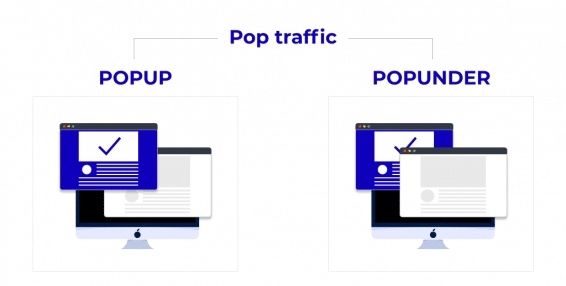
Popup popunder traffic can be a valuable asset for marketers, providing a unique and targeted way to reach potential customers. These types of ads have the potential to capture the attention of users who may not have otherwise noticed or engaged with traditional display advertising.
One of the key benefits of popup popunder traffic is its ability to redirect users to a specific landing page or offer. By utilizing this strategy, marketers can drive traffic to a targeted page, increasing the chances of conversions and sales.
Another advantage of popup popunder traffic is its cost-effectiveness. Compared to other advertising methods, popups and popunders often have lower costs per impression, making them an attractive option for marketers with limited budgets. Additionally, these types of ads allow for precise targeting, ensuring that the right audience sees the message.
Popup popunder traffic can also help marketers increase brand visibility and awareness. The intrusive nature of these ads makes them hard to ignore, exposing users to the brand and message. Even if users choose to close the popup or popunder, they may still remember the brand, leading to increased brand recognition in the future.
However, it's important for marketers to use popup popunder traffic judiciously. Overusing these types of ads can annoy users and drive them away from the website. It's crucial to strike a balance between effective advertising and providing a positive user experience.
In conclusion, popup and popunder traffic offer marketers a unique and targeted way to reach potential customers. With its ability to redirect users, cost-effectiveness, and potential for increased brand visibility, popup popunder traffic can be a valuable tool in any marketer's arsenal.
What is Popup Popunder Traffic?
Popup popunder traffic is a type of online advertising that involves displaying ads in a separate window or tab that appears on top of or behind the current webpage. This type of traffic is generated when a user visits a website and triggers a pop-up or pop-under ad to appear. These ads typically contain promotional content, such as offers, promotions, or links to specific products or services.
Popup popunder traffic can be a highly effective marketing strategy because it allows advertisers to reach a large audience and capture their attention. When a user visits a website, a pop-up or pop-under ad can grab their attention and compel them to click on the ad to learn more or make a purchase.
However, it is important to note that popup popunder ads can be intrusive and disruptive to the user experience. Many users find them annoying and may close them without interacting or converting. To mitigate this, advertisers must carefully design their ads to be relevant, engaging, and non-intrusive.
With the increasing use of ad-blockers and the growing concern for user experience, it is essential for advertisers to carefully select the right ad network or platform to ensure their popup popunder ads are seen by the right audience. Platforms like TrafficStars specialize in delivering high-quality pop traffic and provide targeting options to reach specific demographics or niches.
In conclusion, popup popunder traffic is a form of online advertising that involves displaying ads in separate windows or tabs. While it can be an effective way to reach a wide audience, advertisers must be mindful of the user experience and properly tailor their ads to be relevant and engaging.
Benefits of Popup Popunder Traffic for Marketers
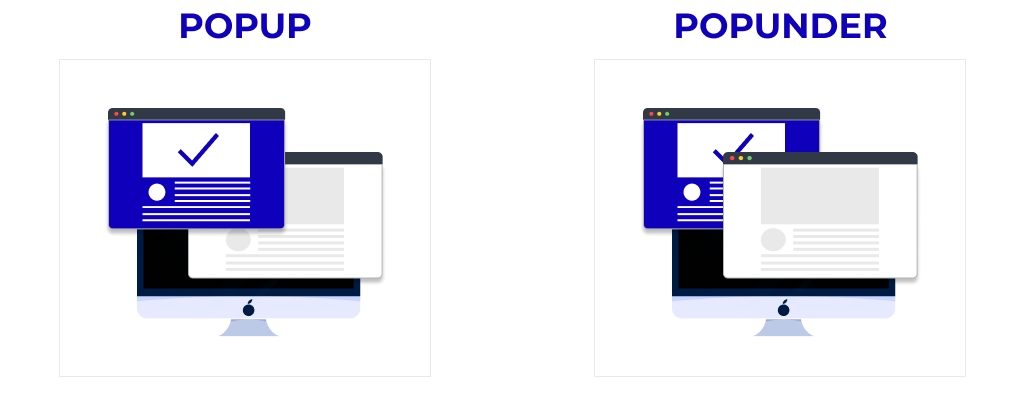
Popup popunder traffic, despite being considered as intrusive by some users, offers several benefits for marketers. Here are some of the advantages:
1. High Conversion Rates

One of the key benefits of popup popunder traffic is its ability to generate high conversion rates. By capturing the attention of users with a sudden and unexpected popup or popunder, marketers have a greater chance of enticing users to take the desired action, whether it's making a purchase, subscribing to a newsletter, or filling out a form.
2. Increased Reach and Visibility
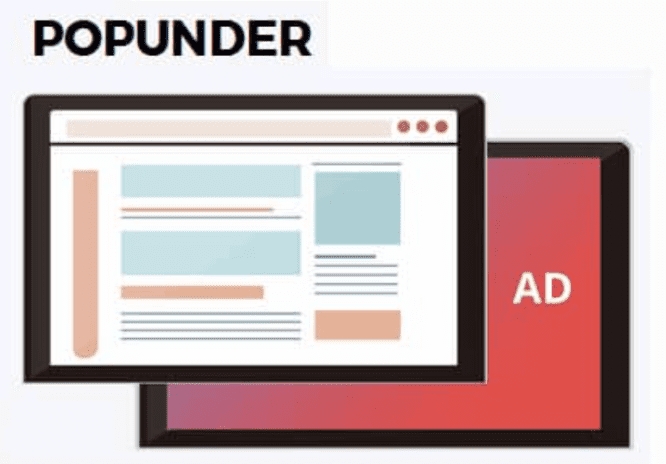
Popup popunder traffic can help marketers increase their reach and visibility to a wider audience. When a popup or popunder appears on a website, it grabs the attention of the users, even if they don't click on it. This increased visibility can lead to increased brand recognition and awareness, as well as potentially attracting new customers.
3. Targeted Advertising
Popup popunder traffic allows marketers to implement highly targeted advertising campaigns. They can choose specific websites or categories of websites where their popups or popunders will appear, ensuring that their message reaches the right audience. This targeted approach can lead to higher engagement and better results for marketers.
4. Cost-Effective Advertising
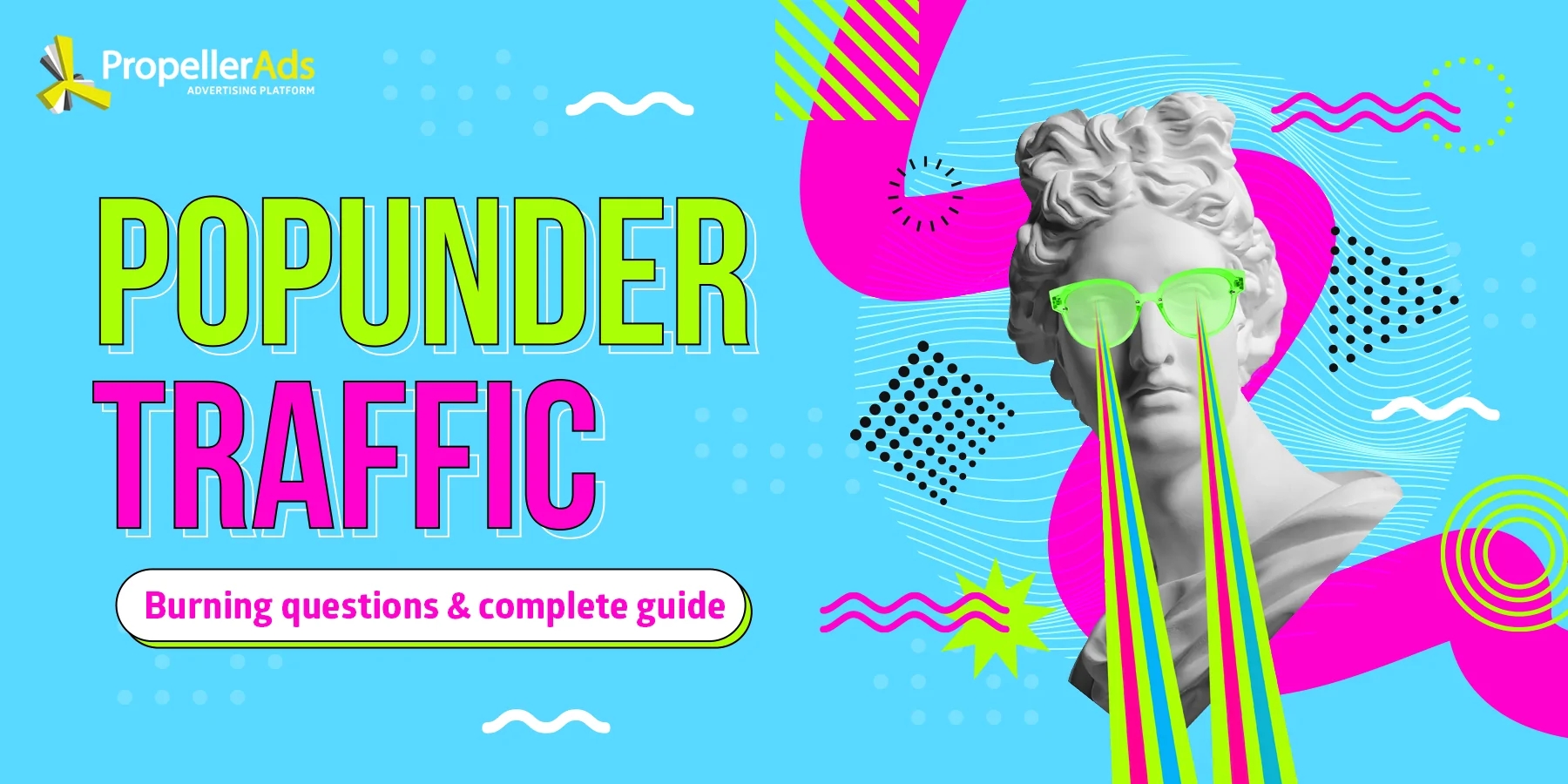
Compared to other forms of online advertising, popup popunder traffic can be a cost-effective option for marketers. The cost per impression or click is generally lower than other advertising methods, making it an attractive choice for businesses with limited budgets. Additionally, the high conversion rates mentioned earlier contribute to a higher return on investment.
5. A/B Testing and Optimization
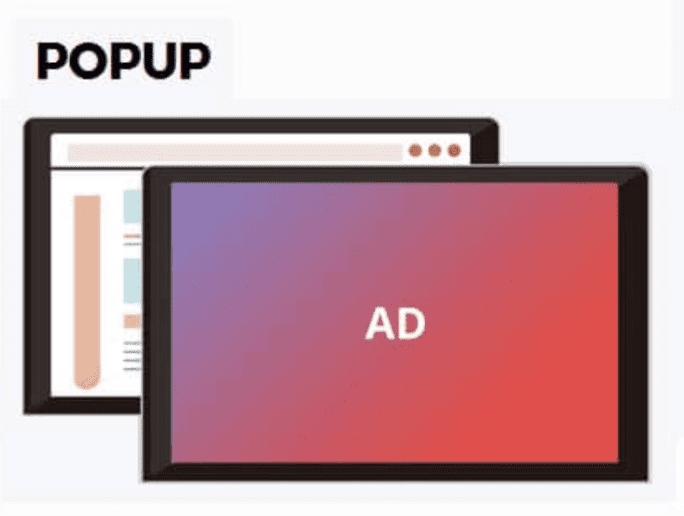
Popup popunder traffic provides marketers with the opportunity to conduct A/B testing and optimization. By testing different variations of popups or popunders, marketers can determine which designs, messages, and offers resonate best with their target audience. This data-driven approach allows for continuous improvement and better campaign performance over time.
In conclusion, while popup popunder traffic may have its detractors, it offers significant benefits for marketers. From high conversion rates to increased reach and visibility, targeted advertising to cost-effective options, and the ability to conduct A/B testing and optimization, popup popunder traffic can be a valuable tool in a marketer's arsenal.
How to Effectively Utilize Popup Popunder Traffic
Popup popunder traffic can be an effective way to drive targeted visitors to your website and increase conversions. However, it's important to use this type of traffic wisely in order to get the best results. Here are some tips to help you effectively utilize popup popunder traffic:
Segment your audience: Before launching a popup popunder campaign, make sure to segment your audience based on their interests, demographics, or previous website behavior. This will allow you to tailor your popups to specific groups of people, increasing the chances of conversions.
Create compelling offers: In order to grab the attention of your visitors, it's important to create compelling offers in your popups. Whether it's a discount, a free trial, or a special promotion, your offer should provide value and encourage visitors to take action.
Use captivating visuals: Visuals play a crucial role in capturing the attention of your audience. Make sure to use eye-catching images or videos in your popups to grab the interest of your visitors and entice them to engage with your offer.
Keep it simple: When designing your popups, keep in mind that simplicity is key. Avoid using excessive text or overwhelming your visitors with too many options. Instead, focus on delivering a clear and concise message that is easy to understand and act upon.
Optimize for mobile: With the increasing use of mobile devices, it's crucial to optimize your popups for mobile users. Make sure your popups are responsive and easily accessible on different screen sizes, ensuring a seamless user experience for mobile visitors.
Test and optimize: Like any marketing strategy, it's important to test and optimize your popup popunder campaigns. Monitor the performance of your popups, analyze the data, and make adjustments accordingly. Test different variations of your popups to find out what works best for your target audience.
Provide an easy way to exit: While popups can be effective, it's important to provide an easy way for visitors to exit if they are not interested. Include a clear and visible close button or provide an option to minimize the popup for a better user experience.
By following these tips, you can effectively utilize popup popunder traffic and maximize the results of your advertising campaigns. Remember to always analyze the data and make adjustments to optimize your strategy for better performance.
Targeting and Optimizing Popup Popunder Traffic
When it comes to targeting and optimizing popup popunder traffic, there are several key factors that marketers need to consider. By understanding these factors and implementing the right strategies, marketers can maximize the effectiveness of their campaigns and increase conversions.
One important aspect of targeting popup popunder traffic is understanding the audience and identifying the right demographic to target. This involves analyzing data and insights to determine which segments of the population are most likely to be interested in the products or services being promoted. By targeting the right audience, marketers can increase the chances of attracting relevant traffic and achieving higher conversion rates.
Another crucial factor in optimizing popup popunder traffic is selecting the right ad format and creatives. Marketers should consider the visual appeal and relevance of their ad creatives, as well as the impact of the chosen ad format on user experience. Choosing eye-catching and engaging creatives that align with the overall brand image can help capture users' attention and generate higher click-through rates.
Effective optimization also involves continually monitoring and analyzing campaign performance. Marketers should utilize tracking tools and metrics to assess the effectiveness of their campaigns and make data-driven adjustments as needed. By tracking key performance indicators such as click-through rates, conversion rates, and bounce rates, marketers can identify areas for improvement and optimize their campaigns accordingly.
Additionally, segmenting and retargeting traffic can be a highly effective strategy in optimizing popup popunder campaigns. By segmenting traffic based on factors such as demographics, browsing behavior, and interests, marketers can deliver more personalized and targeted ads to specific audience segments. Retargeting allows marketers to reach users who have previously shown interest in their products or services, increasing the likelihood of conversion.
Overall, targeting and optimizing popup popunder traffic requires careful analysis, strategic planning, and continuous monitoring. By implementing the right targeting strategies, selecting appealing creatives, and analyzing campaign performance, marketers can maximize the potential of their campaigns and achieve desired results.
Common Misconceptions About Popup Popunder Traffic

Popup and popunder traffic have developed a reputation that is not entirely deserved. While it is true that these types of ads can be controversial, it is important to not dismiss them entirely based on misconceptions. Understanding the reality behind popup and popunder traffic can help marketers make informed decisions about their advertising strategies.
Misconception 1: Popup popunder traffic is low quality.
Many people wrongly assume that popup and popunder traffic is inherently low quality. While it is true that these types of ads can be intrusive and annoying if not used properly, there are still top-tier publishers who offer quality popup popunder traffic. It is crucial for marketers to carefully select reputable publishers and target their campaigns to specific audiences in order to ensure better results.
Misconception 2: Popup popunder traffic only brings bot traffic.
Another common misconception about popup popunder traffic is that it only brings bot traffic. While it is true that popups and popunders can attract some bot traffic, this is not exclusive to these types of ads. In fact, bot traffic can affect any form of online advertising. By employing proper tracking and monitoring tools, marketers can identify and filter out low-quality traffic, ensuring better campaign performance.
Misconception 3: Popup popunder traffic hurts the user experience.
Popup and popunder ads have gained a reputation for being intrusive and detrimental to the user experience. However, this misconception fails to acknowledge that the success of any advertising campaign depends on relevance and proper targeting. When ads are displayed to the right audience, at the right time, and in the right format, they can actually enhance the user experience by providing relevant and timely offers that meet their needs and interests.
Misconception 4: Popup popunder traffic is ineffective.
Some marketers believe that popup and popunder ads are ineffective and outdated. However, this misconception ignores the fact that these types of ads continue to be used by numerous advertisers and generate significant results when implemented correctly. By optimizing campaign targeting, creatives, and landing pages, marketers can leverage popup and popunder traffic to achieve their desired goals.
Misconception 5: Popup popunder traffic is spamming.
Popup and popunder ads are often associated with spamming due to their intrusive nature. However, it is important to differentiate between unsolicited and legitimate advertising. Popup and popunder ads can be an effective way to reach and engage with a targeted audience when used responsibly and within legal and ethical boundaries. Marketers should strive to provide value and relevance to users to avoid being perceived as spammers.
Measuring and Analyzing the Success of Popup Popunder Campaigns
As a marketer, it is crucial to measure and analyze the success of your popup popunder campaigns to understand their effectiveness and make data-driven decisions. By gathering relevant data and using analytics tools, you can gain valuable insights into the performance of your campaigns and optimize them for better results.
1. Set Clear Key Performance Indicators (KPIs)
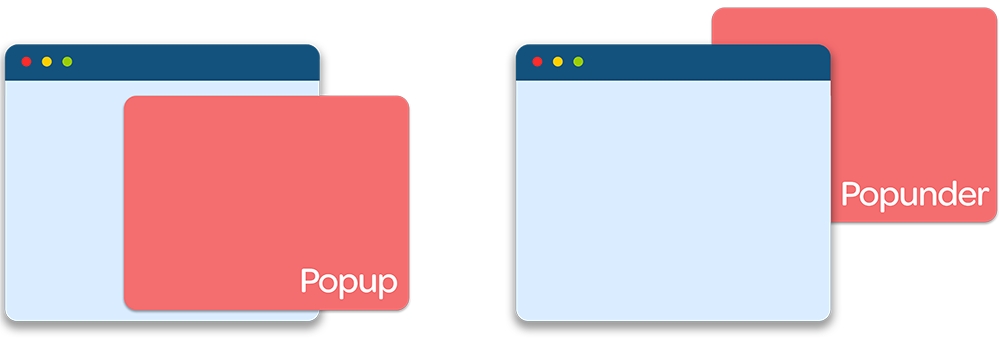
Before you launch your popup popunder campaign, establish clear goals and KPIs to measure its success. These KPIs could include click-through rates (CTR), conversion rates, bounce rates, or the number of leads generated. By defining your KPIs, you have a benchmark to measure your campaign's performance against.
2. Track and Analyze User Engagement

Monitor user engagement metrics such as average session duration, pageviews, and bounce rates to gauge how users are interacting with your popup popunder ads. Analyzing these metrics can help you identify whether your ads are engaging or distracting users. It can also provide insights into the quality of traffic your campaign is generating.
3. Analyze Conversion Rates
The main objective of any marketing campaign is to drive conversions. Measure the conversion rates generated by your popup popunder ads to determine their effectiveness. This can involve tracking the number of completed purchases, sign-ups, or downloads attributed to your campaign. By analyzing conversion rates, you can assess the profitability and ROI of your campaign.
4. Analyze Cost Per Acquisition (CPA)
Calculating your cost per acquisition is essential to understand the financial performance of your popup popunder campaign. Divide the total cost of running the campaign by the number of conversions generated to obtain your CPA. By tracking your CPA, you can determine the cost-effectiveness of your ads and make informed decisions about budget allocation.
5. A/B Testing

Implement A/B testing by creating multiple variations of your popup popunder ads and testing them against each other. This allows you to compare their performance and identify the most effective elements, such as different headlines, visuals, or call-to-action buttons. A/B testing can help optimize your campaign and improve its overall success.
By constantly measuring and analyzing the success of your popup popunder campaigns, you can refine your strategies, optimize your ads, and ensure that you are achieving the desired results. Remember to use reliable analytics tools and platforms to gather accurate data and make well-informed decisions.
For the best buy ads, consider using TrafficStars, a leading advertising platform that offers targeted popunder and popup ad formats to reach your desired audience and maximize campaign success.
Future Trends and Predictions for Popup Popunder Traffic
As the digital advertising landscape continues to evolve, so too will the trends and strategies utilized in the world of popup popunder traffic. Here are some predictions for the future of this advertising format:
1. Improved Targeting and Personalization
One of the key areas of growth for popup popunder traffic will be in the development of more sophisticated targeting and personalization capabilities. Advertisers will have access to advanced technology that enables them to deliver relevant ads based on a user's interests, demographics, and behavior. This level of personalization will enhance the user experience and increase the effectiveness of popup popunder ads.
2. Integration with Native Advertising
Another trend we can expect to see is the integration of popup popunder ads with native advertising. Native ads seamlessly blend with the surrounding content, making them less intrusive and more appealing to users. By combining the power of popup popunder ads with the subtlety of native advertising, marketers can create highly engaging and effective campaigns.
3. Enhanced User Experience
Popup popunder ads have often been associated with negative user experiences due to their interruptive nature. However, in the future, we can expect to see efforts to improve the user experience through more strategic ad placement, better timing, and improved ad design. This will help mitigate the negative perception of popup popunder ads and make them more welcomed by users.
4. Increased Regulations and Compliance
With the growing concerns around privacy and data protection, it is likely that we will see increased regulations and compliance requirements for popup popunder traffic. Advertisers will need to be more transparent with their data collection and usage practices, and ensure they are in compliance with relevant laws and regulations. This will ultimately foster trust and credibility among users.
5. Continued Innovation and Experimentation
The world of digital advertising is constantly evolving, and popup popunder traffic is no exception. We can expect to see continued innovation and experimentation with new formats, technologies, and strategies. Advertisers will need to stay on top of these trends and be willing to test and adapt their campaigns to stay competitive in the ever-changing advertising landscape.
Conclusion
Popup popunder traffic is a powerful advertising format that is likely to continue evolving and adapting to the changing needs and preferences of users. By embracing these future trends and predictions, marketers can stay ahead of the curve and leverage popup popunder traffic to drive impactful results for their campaigns.
What is popup/popunder traffic?
Popup/popunder traffic refers to the type of online advertising where a small window (popup) or a full browser window (popunder) appears on the user's screen while they are browsing websites. These windows usually contain advertisements or offers.
How does popup/popunder traffic work?
Popup/popunder traffic works by subscribing to a network or platform that specializes in delivering popup or popunder ads. Advertisers create their campaigns and specify the target audience, and the network delivers the ads to the intended users through the popup or popunder windows.
What are the benefits of using popup/popunder traffic for marketing?
Popup/popunder traffic can be beneficial for marketing because it allows for high visibility and immediate attention from the users. These ads have a higher chance of being noticed and clicked on, which can lead to increased brand exposure and website traffic.
Are there any downsides to using popup/popunder traffic?
Yes, there are some downsides to using popup/popunder traffic. These types of ads can be intrusive and annoying to users, which may lead to a negative perception of the brand. Additionally, some users may have popup blockers, which can prevent the ads from being displayed.
How can marketers make the most out of popup/popunder traffic?
To make the most out of popup/popunder traffic, marketers should ensure that their ads are relevant and engaging to the target audience. It is important to test different creatives and placements to find what works best. Additionally, optimizing landing pages and tracking conversion rates can help improve the effectiveness of the campaigns.
Buy CPC Traffic | Buy Display Ads | Exclusive traffic sources | Buy Push Ads | Popunder ADS | Buy Native Ads | Buy Preroll Ads
2022-2024 @ The Ins and Outs of Popup Popunder Traffic: What Marketers Need to Know